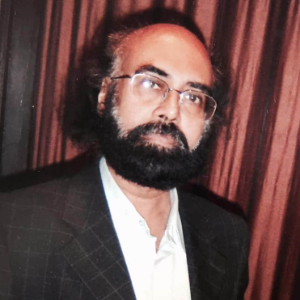Abstract:
Technology has made great advances in electronic device-speed, but optical devices operate in the time-domain unreachable by electronics. Optical devices have no competition in the time domain less than 1 picosecond. Photonic devices can switch and process light signals without converting them into electronic form. Major advantages of these devices are speed and conservation of bandwidth. Switching is performed through changes in refractive index of the material that are proportional to the light intensity. This particular feature is the result of third-order dielectric susceptibility, c(3), or “optical Kerr susceptibility”, which is related to the nonlinear part of the total refractive index. Future prospects in photonic switching and information processing critically depend on the progress towards improved photonic materials with significantly enhanced Kerr susceptibilities. Optically isotropic materials like silica glasses that have inversion symmetry intrinsically possess some third-order optical nonlinearities at l = 1.06 µm. This, combined with extremely low absorption coefficient of silica glasses, allows all-optical switching between two waveguides embedded in a silica fibre simply by controlling the optical pulse intensity. Plasmonic nanoparticles in dielectric media lead to the generation of surface-plasmons in the neighbourhood of dielectric surfaces, resulting in a local evanescent field that experiences dielectric confinement. These field affects the coherent oscillation of dipoles in the conduction band thus enhancing the effective third-order nonlinearity. The strength of the nonlinearity is influenced by controlling the “surface plasmon resonance” (SPR) band by tuning the size and shape of the nanomaterials.
The incorporation of metal nano-colloids in glasses have been found to induce desired third-order optical non-linearities in the composite at wavelengths very close to that of the characteristic surface plasmon resonance (SPR) of the metal clusters. Ion implantation is a potential method for inducing colloid formation at a high local concentration unachievable by chemical doping or melt-glass fabrication process and for confining the nonlinearities to specific regions in various host matrices. Metal-ion induced colloid generation in bulk silica glasses has shown that these nanocluster–glass composites under favourable circumstances have significant enhancement of c(3) with picosecond to femtosecond temporal responses. The extraordinary achievements in developing such novel photonic materials have opened the way for advances in photonic devices, such as all-optical switching, coupled waveguides as a directional coupler, etc. The talk will address on the ion-beam synthesis of metal-glass nanocomposites for photonic applications.
Biography:
Purushottam Chakraborty, a Former Senior Professor of Physics, Saha Institute of Nuclear Physics, Kolkata, India and a Former Adjunct Professor of Physics, University of Pretoria, South Africa is considered as one of the leading experts in Materials Science and Materials Analysis using Ion Beams. He was awarded the “Most Eminent Mass Spectrometrist of India” and conferred the “Gold Medal” by the Department of Atomic Energy (DAE), Government of India for his outstanding contributions in Secondary Ion Mass Spectrometry (SIMS). He received “Premchand Roychand Scholarship (PRS)” and “Mouat Medal” of Calcutta University. Prof Chakraborty’s research areas include: Atomic Collisions in Solids, Ion-Beam Modifications and Analysis, Secondary Ion Mass Spectrometry (SIMS), Low-dimensional Materials, X-UV optics, Nonlinear Optics, Photonics, Plasmonics, etc.
Prof Chakraborty indigenously fabricated an RF-Quadrupole Mass Spectrometer for the first time in India for working on Atomic Collisions in Solids. His “MCsn+ molecular-ion based SIMS” is considered to be innovative for compositional analysis of nanostructured materials. His work on the fabrication of ‘layered Synthetic Microstructures (LSM)’ is recognized as a pioneering contribution in the “Realization of Optical Devices for the Extreme Ultraviolet to Soft X-rays”. His works on “Metal-Glass Nanocomposites” have led to the remarkable achievements in the development of novel photonic materials.
Prof Chakraborty worked at FOM-Institute in Netherlands, ICTP and Padova University in Italy, Laval University in Canada, Osaka Electro-Communication University in Japan, University of Pretoria in South Africa, Pontifical Catholic University of Rio de Janeiro in Brazil, etc. He delivered lectures at Imperial College in London; Maria Curie-Skłodowska University and Polish Academy of Sciences in Poland; Vanderbilt University, IBM T J Watson Research Centre, Rutgers University, Jackson State University, Furman University, Yale University in USA; Bielefeld University, Friedrich Schillar University, Kaiserslautern University in Germany; University of Western Australia, Newcastle University Australia; Osaka Electrocommunication University, Kyoto University, SPring-8, Nagoya Institute of Technology in Japan; National Taiwan University in Taiwan; Witwatersrand University, i-Themba Labs for Accelerator Sciences, Nelson Mandela University in South Africa; Asian Institute of Technology in Thailand, TIFR, IISc, IITs, Tezpur University, in India, etc. Prof Chakraborty has delivered invited lectures at more than 140 international conferences across the globe and published more than 130 scientific papers including review articles, book chapters, etc. Prof Chakraborty edited a book on “Ion-beam Analysis of Surfaces and Interfaces of Condensed Matter Systems” (Nova Science Publishers, New York, USA) and Journal of Physics – Conference Series (UK). He is the Editor of “Photonic Materials”, as a Section of the “Encyclopedia of Materials: Electronics” (To be published by Elsevier Science). He is editing a book “Nanomaterials for Sensing and Labelling Applications” (Springer, Germany). Prof Chakraborty is a Fellow of the Indian Chemical Society and West Bengal Academy of Science and Technology.



